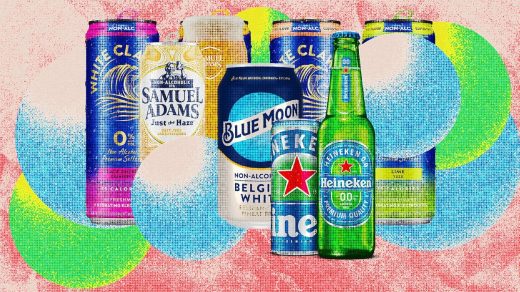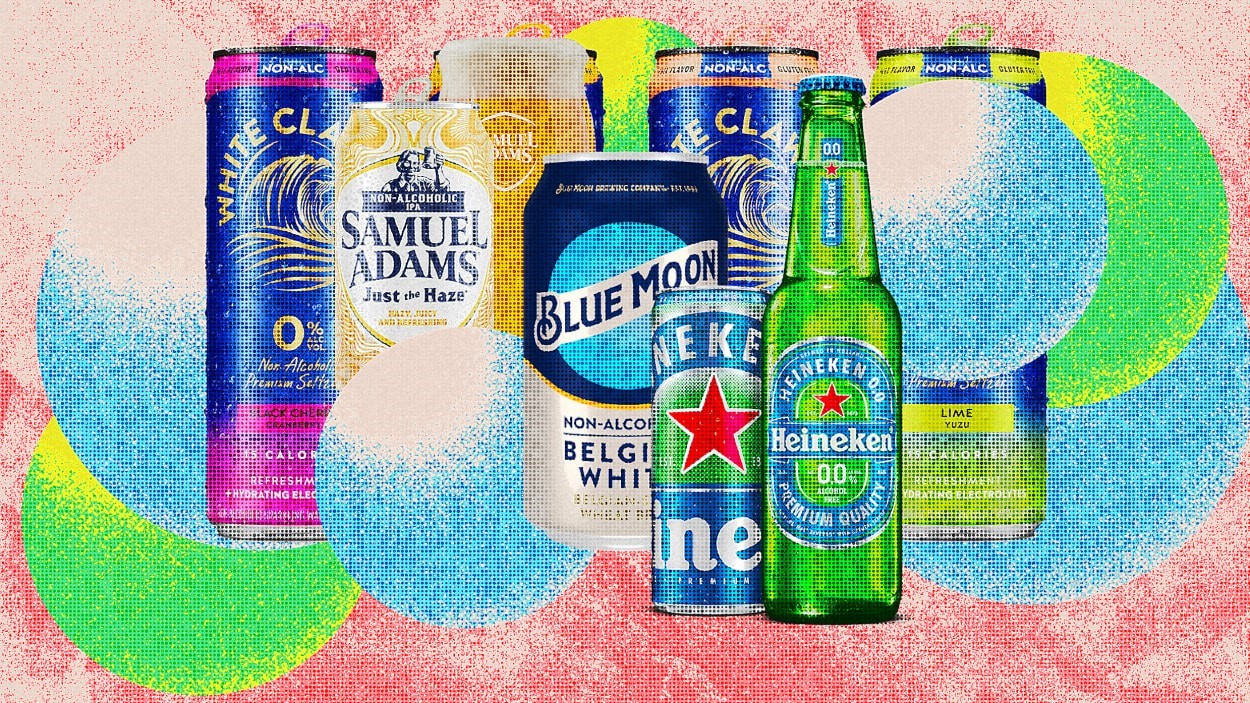How Dry January became a branding event for Big Alcohol
Branded is a weekly column devoted to the intersection of marketing, business, design, and culture.
Consumer brands often strive to be part of a larger cultural conversation. But what if that cultural conversation is basically about not using your product?
This is the dilemma faced by beer, wine, and spirits marketers as Dry January—challenging consumers to abstain from alcohol for a month—grows into an increasingly buzzed-about yearly ritual. According to data tracker Nielsen IQ, 29% of consumers say they took part in Dry January last year, and 44% said they were likely to this year. While those numbers likely represent aspiration rather than actual behavior, the month has become a sort of flagship for a broader “sober curious” trend that has lifted year-round sales of alcohol alternatives well beyond niche territory. But increasingly, some very familiar brands have become part of that conversation too. Brands like, say, Heineken.
Heineken 0.0, that is. Introduced in 2017, it’s now the top-selling nonalcoholic beer in America; its $86 million in sales reportedly account for 7% of all Heineken brand sales. A recent ad for the U.K. market positions no-alcohol Heineken as an acceptable choice at the bar, so you don’t have to bail on drinking buddies while you abstain. (The ad features Welsh soccer star Gareth Bale—get it?) The idea is that avoiding alcohol needn’t be about settling for less, but adding more: “Heineken 0.0 enables you to do more of what you love, like socialize with friends down at the pub,” Stephanie Dexter, brand director at Heineken U.K., told Adweek. Heineken social media has struck a similar theme, noting that Dry January participants need not “compromise on taste” and can shift to its nonalcoholic version instead.
The idea is that Dry January (or the less stringent, “Damp January”) doesn’t have to be a buzzkill, and the sober-curious can blend in at the bar without fear of being stigmatized as an uptight teetotaler. More precisely, the message is that you don’t have to avoid familiar alcohol brands to participate, you can embrace them: Hey, alcohol-avoiders, the beer, wine, and spirits industry has your back.
Heineken is hardly alone in adding its brand to the alcohol-free mix, which includes such longtime options as O’Doul’s and newer craft-y offerings as Athletic Brewing Company. In recent years, Guinness 0.0, Samuel Adams Just the Haze, and Budweiser Zero have also become top sellers.
Increasingly, this is a year-round phenomenon, as consumer interest in alcohol alternatives has soared. Alcohol sales have flattened since a pandemic-era spike, while nonalcoholic beer has seen increases of around 30% for several years straight. But Dry January is clearly becoming a monthlong Super Bowl for the category, a marketing scrum, and a time for new launches and silly stunts.
Blue Moon introduced a nonalcoholic Belgian white ale with a promotion that started January 12—the day when the most significant chunk of Dry January participants fall off the wagon. Miller Lite, in a curious twist, is offering alcohol-free “beer mints” that supposedly mimic the brew’s flavor. And White Claw, a brand whose entire raison d’etre is adding alcohol to seltzer, has rolled out a zero-alcohol version. (In other words: seltzer.)
For established brands in particular, building up nonalcoholic variations of alcoholic drinks is a strategy that transcends Dry January, and in fact amounts to a kind of marketing jiujitsu. After all, actively subverting the month event—which began as a public health initiative by a British public health organization back in 2012—would be a bad look. Much better to simply find a way to join the party. According to the Wall Street Journal, Heineken is pouring a quarter of its global Heineken ad budget into Heineken 0.0. And it’s not just targeting abstainers, but also consumers who just want to cut back, perhaps toggling back and forth between versions. Some of its past non-Dry January-specific advertising has even suggested new alcohol-free drinking occasions—like giving a work presentation.
It’s hard to say whether the sobriety trend will have a lasting impact, but it seems like a safe bet that Dry January will be back for another round. And for now, Big Alcohol is buying.
(18)



